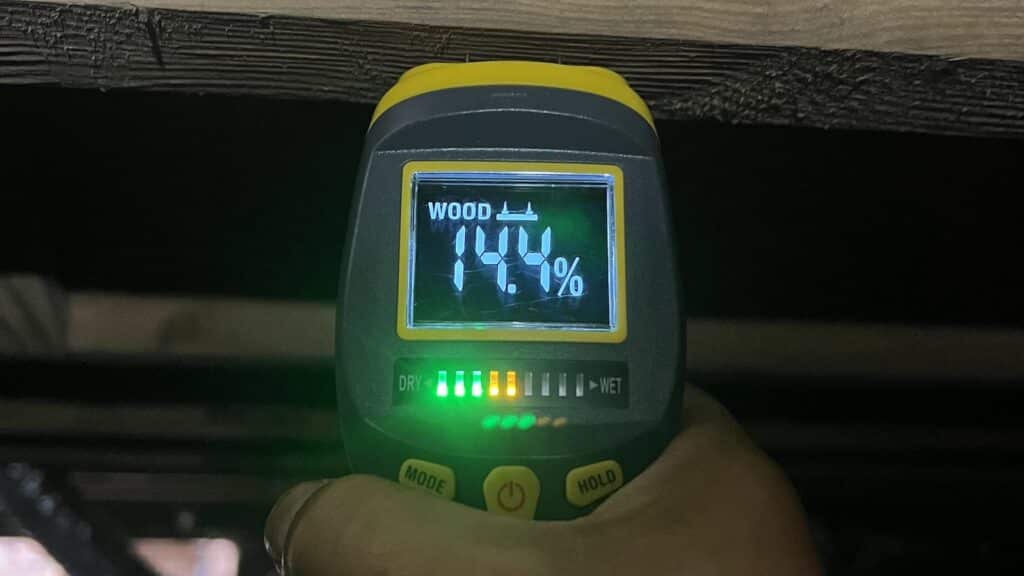What is Wood Moisture Content?
Wood Moisture Content (or WMC) is the weight of water expressed as a percentage of dry weight of wood. It measures how much moisture is present in wood in order to prevent water damage to wood. We measure Wood Moisture Content by inserting a moisture meter device into the floor framing of your home’s substructure in order to assess moisture levels and prevent damage to your home.

What are the Acceptable Moisture Levels for wood in my home?
Wood moisture levels below 16% are considered safe for the wood in residential substructures. This range of WMC is considered safe for lumber used in the construction of homes. Anything above 16% is considered unsafe, and indicates that the wood in your home is exposed to excess moisture. This can range from simple fixes to signs of more extensive damage, including dry rot and decay. If WMC is too high, wood will have to be replaced, which can be expensive to a homeowner. It is important to schedule a crawl space inspection to evaluate WMC under your home if you are unsure what is going on in your crawl space. This way, you can catch problems and make fixes before damage becomes too extensive (and expensive!).
Refer to the reference material below that we show homeowners when we perform our inspections for further information about Wood Moisture Content.
Understanding Wood Moisture
25-30%
Actual, and often extensive, damage is evident when readings reach this level. The substructure may show decayed areas, ranging from small to very large, of rotten floor joist, sills, and subflooring. Often this is the “too late” level of reading for correcting problem situations without repair costs in the thousands of dollars.
20-24%
Readings indicate a serious problem somewhere. The excess moisture source must be immediately corrected, and the situation carefully monitored until the WMC returns to the 12-16 range.
16-20%
Readings indicate a possible elevated level of wood moisture. Such readings should alert the homeowner to look for a source of excess moisture in the crawl space, and to be sure that foundation vents are opened for continuous year round ventilation. The excess moisture source should be corrected if found.
12-16% (SAFE)
Readings are common to construction grades, air dried lumber and “healthy” residential substructures (beneath the first floor of your home in crawl spaces).
<12% (SAFE)
Readings in this area are gathered from kiln or oven dried woods and furniture grades of wood, and represent very dry conditions.
*Data from Clemson Extension: Residential Housing, Wood Moisture Content Document, HL255. www.cisllc.org/pdf/wmc.pdf
Click Here to Download a PDF of our Wood Moisture Content Chart
Evaluate Your Crawl Space’s Wood Moisture Content
Do you know what’s going on under your home? If you are unsure about the conditions you see in your crawl space, or if you don’t want to crawl under your home at all, we’ll come out and take a look. Schedule your free inspection with Crawlspace Medic today.
Other Crawl Space Moisture Blogs
How Water and Moisture Enter your Crawl Space

